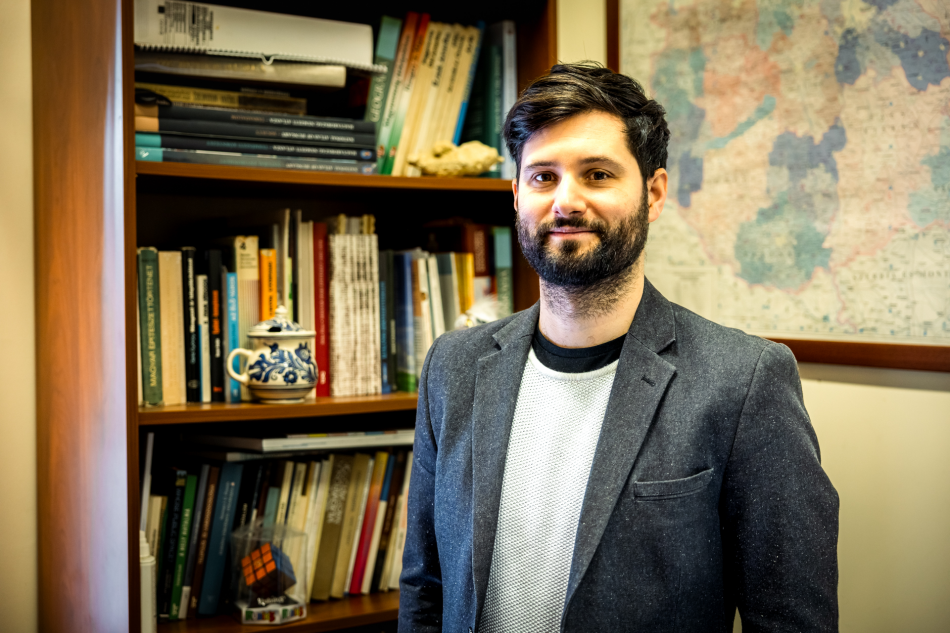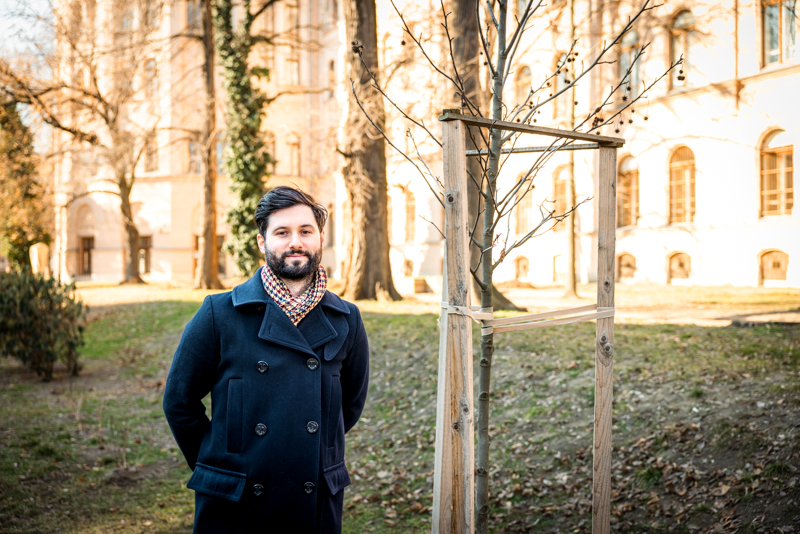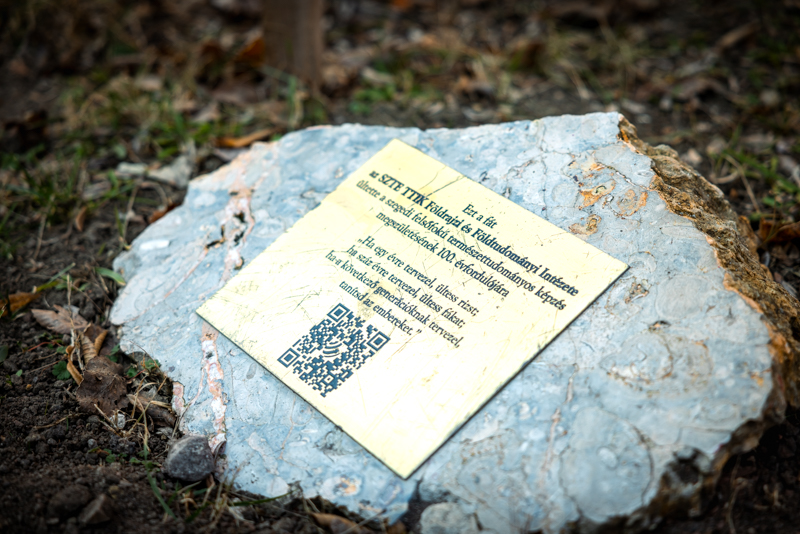
The PHOENIX Project, a Horizon 2020 initiative that the University of Szeged’s Faculty of Science and Informatics (SZTE TTIK) is contributing to, has reached yet another milestone, with its outcomes soon to be presented at the European Parliament. The research project explores individuals’ attitudes toward the green transition, the NetZero concept outlined in the new European Green Deal, and the lifestyle changes necessary to achieve the goals set. Dr. Gyula Nagy, project coordinator and senior assistant professor at the Department of Economic and Social Geography within the Institute of Geography and Earth Sciences at SZTE TTIK, shared his insights into the research project, highlighting its broader significance.
For a more environmentally conscious and sustainable Europe
Horizon 2020 (H2020) was the European Union’s largest research and innovation framework program, running from 2014 to 2020. It aimed to support European research, technological development, and innovation, laying the groundwork for the European Green Deal, launched in 2019. The Green Deal’s overarching goal is to gradually make Europe greener and more sustainable – with a particular focus on promoting the circular economy, transforming agriculture, improving energy efficiency, and preserving biodiversity.
Researchers from the University of Szeged’s Faculty of Science and Informatics joined the initiative through the PHOENIX Project, designed to examine how people perceive the green transition and the NetZero concept set out in the European Green Deal. NetZero refers to reducing greenhouse gas emissions to zero, with the European Union aiming to achieve carbon neutrality by 2050. Horizon 2020 – along with its successor, Horizon Europe – plays a key role in funding research and innovations that support this climate-neutral future, and the University of Szeged’s research within the PHOENIX Project contributes to advancing this green transition.
As Dr. Gyula Nagy explained, the project – together with several other European partner initiatives – seeks to answer key questions about the green transition. It explores how European citizens can be effectively engaged in the process, how local voices can be incorporated into shaping large-scale European policies, and how public awareness of the transition can be improved. The research also investigates methods for measuring public attitudes toward various intervention strategies and, ultimately, how these perceptions and attitudes can be influenced.
Another key objective of the research is to identify which aspects of this large-scale program are effective – and which are not. Equally important is understanding why certain initiatives may fall short of their intended goals. To address these questions, the consortium partners have designated several pilot areas, with a focus on biodiversity, energy systems, and the ‘Farm to Fork’ strategy, which promotes sustainable food supply chains.
Four years ago, the University of Szeged joined the research effort through these focus areas. “In Szeged, we are studying energy poverty and exploring the potential for revitalizing green spaces. In the Balaton Uplands, a region surrounding Lake Balaton in Hungary, we are focusing on the feasibility of short food supply chains within the ‘Farm to Fork’ strategy. Our goal is to actively involve local communities in the process,” shared Dr. Gyula Nagy.
The project has progressed through five distinct phases, each focusing on a specific aspect of the process.

Dr. Gyula Nagy standing next to the SZTE TTIK Centennial Tree on Göncz Árpád Promenade
Photo by István Sahin-Tóth
Szeged holds its first citizens’ assembly for a ‘green city’
As part of the PHOENIX Project, Szeged’s first citizens’ assembly for a ‘green city’ was held in January 2024. The forum brought together 40 local residents, who shared their views on the green city concept and proposed potential solutions. Among the ideas discussed, the most supported proposal was the renovation and construction of Boszorkánysziget (Witch Island) – a green space along the Tisza River in Szeged – to make it more accessible to pedestrians. According to Dr. Gyula Nagy, it is a fortunate coincidence that this area is already receiving special attention due to the planned construction of the southern Tisza bridge, creating an ideal opportunity to incorporate public input into the planning process. Consequently, the project team has since submitted the citizens’ recommendations to the city authorities.
About a year after the citizens’ assembly, its participants were invited by the city to the presentation of the new urban greening action plan concept – an event where they were welcomed by the deputy mayor. The plan incorporates key directions and development proposals from the first citizens’ assembly, along with the results of the subsequent Green Hackathon idea competition. The hackathon, held in the summer of 2024, was won by a team of students from the Institute of Geography and Earth Sciences at the University of Szeged. With the ripple effects of the citizens’ assembly as a pilot project also clearly felt, the participants at the presentation engaged in a collaborative workshop and brainstorming session to further refine relevant ideas.
“This is a tremendous success. While the forty people who accepted our invitation and attended the citizens’ assembly last year do not represent the entire population of Szeged, they still provided a remarkably diverse range of perspectives. Moreover, we successfully involved them in the planning process, both directly and indirectly, which is a significant achievement. Indeed, Szeged has a reputation for openness in this regard, with similar forums held quite frequently. However, what sets this effort apart is how we followed a structured methodology to compile a set of proposals with the help of residents – and how the city accepted and integrated those proposals. This approach is truly unique,” the researcher explained.
Could Szeged’s Witch Island be revitalized based on citizens’ proposals?
Dr. Gyula Nagy pointed out that Witch Island functions as an informal green space in Szeged – a natural, untamed area lacking built infrastructure such as playgrounds, benches, or landscaped greenery typically found in parks or gardens. Even so, locals regularly use it for relaxation, walks, and other recreational activities.
“We believe that preserving its natural state is essential. The participants of the citizens’ assembly also supported this view, while acknowledging that the area’s current poor condition and certain problematic aspects need to be addressed,” he noted.
The researcher also revealed that the planned revitalization of Witch Island will aim to strike a balance between formal and informal green spaces. The goal is to create a mixed-use green area that preserves its natural environment while offering well-maintained walking paths and educational trails for visitors. However, he also emphasized that the land use and revitalization of the area will be influenced by the development plans for the southern Tisza bridge, ultimately shaping its final form.
‘Farm to Fork’ in the Balaton Uplands
Another key area examined in the research was the Balaton Uplands and the surrounding areas of Lake Balaton in Hungary. With the involvement of local communities, the study aimed to explore how the ‘Farm to Fork’ concept could be implemented in such a diverse, complex, and multifaceted area as the Balaton region. The focus was on identifying the shortest possible supply chain – determining how products can travel most efficiently from farm to table. Another important aspect of the research was analyzing how the ‘Farm to Fork’ concept integrates into tourism and local daily life, as well as identifying the factors that facilitate or hinder its successful implementation.
“As part of the research, we conducted a four-stage, targeted consultation process involving local small-scale producers and tourism service providers. In total, we reached out to more than a hundred businesses, with around twenty-five joining from various economic sectors. Among the participants were jam makers, bakers, spice growers, winemakers, viticulturists, pálinka distillers, as well as small and large hotel owners. The goal was to map out the entire supply chain from farm to table as comprehensively as possible, in line with the ‘Farm to Fork’ principle. Indeed, a short supply chain not only helps reduce carbon emissions but also contributes to healthier food options and the preservation of local values, aligning with the European Union’s green transition efforts,” explained Dr. Gyula Nagy.
The forum sparked a discussion on the topic, with participants exploring some key questions:
If we know that locally produced goods – like grandma’s homemade apricot jam – are the best choice in many ways, being free of additives and artificial ingredients and sourced from the Balaton region, then why doesn’t everyone choose these goods? What are the barriers preventing this from becoming the norm?
These questions indicate that, despite the European Union’s well-intentioned initiatives related to the green transition and the ‘Farm to Fork’ concept, these ideas often do not materialize as effectively as one might logically expect. In light of this, the research aimed to understand why this is the case and whether market players, both at the local and national levels, could propose solutions to help reshape the system and overcome obstacles.
The discussions revealed that many administrative and legal factors impede small-scale producers, as regulations are primarily designed for large-scale producers and multinational corporations. After all, complying with food safety regulations is significantly different for a company employing 300 people compared to one with only three.
“In Western Europe, we see that these regulations are much more flexible and tailored to business size than in Hungary. As a result, small enterprises there are not required to meet the same quotas as large corporations. Still, there’s another major obstacle, which is the lack of a unified platform that brings producers together, represents their interests collectively, and bridges the gap between them and other market players. While numerous civil organizations engage in this type of work, their efforts are usually focused on narrow groups – such as winemakers or tourism service providers – rather than the broader sector. You see, ‘Farm to Fork’ is not about walking into a large supermarket and picking up whatever comes to mind. It operates on a seasonal basis. However, in today’s consumer society, we are accustomed to immediately getting what we want – if I want to eat tomatoes in February, I will find tomatoes. But this ‘I want everything, and I want it now’ mindset is incompatible with the concept of environmentally and regionally conscious production. This is a major point of friction. At the same time, the research highlighted the challenges that producers face and why they cannot always meet consumer expectations,” explained Dr. Gyula Nagy.

The researcher who pioneers discussion
Photo by István Sahin-Tóth
Dividing lines and shifting perspectives
Dr. Gyula Nagy continued by discussing certain dividing lines, pointing out that the sharpest divide appears between a specific group of consumers – mass tourists – and other stakeholders in the region. This stands out as one of the most intriguing findings of the research. Related observations suggest that the ‘Farm to Fork’ component of the European green transition can only be truly effective if, alongside practical measures, consumer attitudes are also shaped. This involves integrating the process with public awareness campaigns and educational efforts to influence mindsets.
In Hungary today, civil initiatives remain relatively weak. Few people actively advocate for a green lifestyle, and sustainability is seldom a top priority in everyday life, as financial struggles often take precedence over environmental concerns. According to the researcher, people are generally hesitant to commit to a cause unless there is a strong community or support network backing it.
The project also revealed that certain activities are effective only on a local scale and in smaller settings. Accordingly, geographical distance presents a significant barrier to community engagement. While in Szeged, a central location can be reached within 20 minutes, in the Balaton region, attending a single meeting might require hours of travel, making collaboration nearly impossible. This observation could be particularly relevant for the European Union, as it highlights a critical point where policy directives and local community needs no longer align, explained Dr. Gyula Nagy.
PHOENIX Project outcomes to be presented in Brussels
The PHOENIX Project received 340,000 euros specifically for research activities. It involved over 10 researchers, PhD students, and participants from the Hungarian National Student Research Conference (OTDK). As Dr. Gyula Nagy revealed, their findings will be presented in Brussels from June 4 to 6 before representatives of the European Commission and the European Parliament.
One of the key findings is that geographical scale significantly affects the effectiveness of public participation. While smaller communities can be mobilized more easily, cooperation declines substantially as geographical distances increase. In other words, the greater the distance, the more difficult it becomes to engage the public. This insight is not only relevant to the ‘Farm to Fork’ initiative but could also have a fundamental impact on the success of other green transition programs.
“The results achieved by the University of Szeged in this research deserve special attention. The contrast between the two Hungarian pilot areas – which emerged around two entirely different topics – is fascinating, both geographically and from a policy perspective. We were able to roughly outline the point where policy and public opinion intersect, influence each other synergistically, and shape one another. However, beyond that invisible line, where geographical distances become too great, public engagement no longer yields meaningful results. This new perspective offers essential insights that have also captured the EU’s attention regarding the local implementation of European policies,” explained Dr. Gyula Nagy.
He added that their findings confirm that territorial scale fundamentally impacts the success of community-driven development initiatives. “Why is it still important to implement these initiatives? Well, because when people are involved, they feel a much stronger connection to the project,” the researcher explained.
He added that their partner projects – such as Real Deal – are aimed at similar goals in different fields, including the circular economy, but employ different methodologies. “We are especially excited for the major presentations, as there are a total of five sister projects within the European Union. It is a particular source of pride that one of them is being carried out with the participation of the University of Szeged,” Dr. Gyula Nagy shared.
The researcher emphasized that the PHOENIX Project is a major success also because it has positioned SZTE within an international research network, opening doors to further large-scale projects for the institution. For example, the research initiated within the project will continue as part of Biodiversa+, a new project to be launched on April 1 under the Horizon Europe framework. As the name suggests, this research will focus on biodiversity.
The researcher also expressed hope that in the next 5–10 years, their institute will participate in even more major international research projects of this scale. Their goal is to integrate various aspects of research conducted under the European Green Deal since 2019, developing a complete picture and deriving long-term insights.
The project’s researchers have already shared their findings at several national conferences, helping to lay the groundwork for future SZTE-led research projects based on their experiences.

“It is crucial that what we do today continues to hold value for the future.”
Photo by István Sahin-Tóth
We may be one of the last generations capable of making a change
“As researchers at the University of Szeged, this is how we contribute – both to the implementation of policy and to making Europe greener while combating the effects of climate change. These goals are not only priorities for the EU but are also of paramount importance to the University of Szeged. Ultimately, every development and research initiative serves the purpose of transforming the knowledge we gain as researchers into education. In particular, the role of SZTE is to identify gaps in attitudes, engage students in relevant research, and shape their perspectives. After all, today’s students will be tomorrow’s parents, meaning we have a generational responsibility in creating a sustainable future. I truly believe that if we are capable of change, we can achieve this. We are one of the last generations that can still take action against the effects of climate change – and we may very well be the last. It fills all of us with pride to be part of this effort as researchers at SZTE,” said Dr. Gyula Nagy.
Creating value for our grandchildren and great-grandchildren
A tree that takes decades to grow becomes a lasting legacy for all of us. That is why the team at the Institute of Geography and Earth Sciences believes that planting trees is not only an act of environmental conservation, but also a way to shape people’s perspectives.
“The Faculty of Sciences and Informatics has planted a centennial tree on Göncz Árpád Promenade, next to the József Attila Study and Information Center. Right now, it is just a small sapling with a few branches and leaves. But in 100 years, the grandchildren and great-grandchildren of today’s university students will be able to rest in its shade. That is why it’s crucial that what we do today continues to hold value for the future,” the researcher concluded.
Original Hungarian text by Tímea Fülöp
Feature photo: Dr. Gyula Nagy, project coordinator and senior assistant professor at the Department of Economic and Social Geography, Institute of Geography and Earth Sciences, SZTE TTIK
Photo by István Sahin-Tóth

